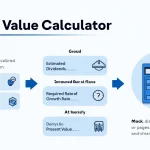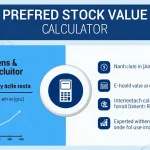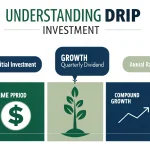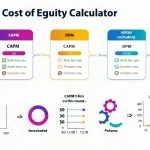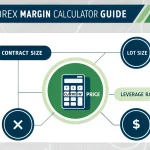Margin of Safety Calculator
Is this tool helpful?
How to Use the Margin of Safety Calculator Effectively
- Enter Current Market Price: Input the stock’s current trading price, such as $52.45 for a consumer goods company or $134.90 for a tech firm.
- Input Price-to-Earnings (P/E) Ratio: Provide the stock’s P/E ratio, for example, 10.8 for a stable dividend stock or 13.2 for a utility stock.
- Provide Price-to-Book (P/B) Ratio: Enter the P/B ratio, like 1.1 for a financial company or 0.85 for an industrial firm.
- Click “Calculate Margin of Safety” to see your results, including intrinsic value and investment recommendation.
Understanding the Margin of Safety Calculator: Definition, Purpose, and Benefits
The Margin of Safety Calculator is a simple yet powerful value investing tool based on Benjamin Graham’s conservative investment principles. It helps you estimate a stock’s intrinsic value relative to its current market price, highlighting how much safety or risk exists before buying.
By factoring in key valuation metrics like the Price-to-Earnings (P/E) ratio and Price-to-Book (P/B) ratio, the calculator adjusts the intrinsic value to reflect investment prudence. This approach helps you identify stocks that trade at a discount to their true worth, giving you a margin that cushions against market volatility and errors in valuation.
Benefits of using this margin of safety calculator include:
- Improved risk management through quantifying undervaluation.
- Data-driven support for investment decisions.
- Protection against overpaying for stocks.
- Clear comparison between multiple investment options.
- Quick identification of opportunity and caution signals.
Example Calculations Using the Margin of Safety JavaScript Calculator
Case 1: Stable Value Stock
Suppose a stock is trading at $58.00 with a P/E ratio of 14.0 and a P/B ratio of 1.3. Since both ratios are within Graham’s conservative thresholds (P/E ≤ 15 and P/B ≤ 1.5), the intrinsic value equals the current market price:
Intrinsic Value = $58.00
Margin of Safety is calculated as:
$$ \text{Margin of Safety} = \frac{58.00 – 58.00}{58.00} \times 100\% = 0\% $$This indicates a fair-valued stock with no additional safety margin, suggesting you proceed with caution or look for better opportunities.
Case 2: Growth Stock with Higher Valuations
Consider a stock priced at $95.00 with a P/E of 20.0 and P/B of 2.2. Both ratios exceed conservative limits. The calculator adjusts intrinsic value downward:
Intrinsic Value Calculation:
$$ \text{Adjusted Intrinsic Value} = 95.00 \times \frac{15}{20.0} \times \frac{1.5}{2.2} = 48.43 $$Margin of Safety becomes:
$$ \text{Margin of Safety} = \frac{48.43 – 95.00}{48.43} \times 100\% = -96.1\% $$A large negative margin means the stock trades well above its intrinsic value based on Graham’s criteria, signaling high risk. You should consider alternative investments or wait for a price correction.
How the Margin of Safety is Calculated: Key Components Explained
Intrinsic Value
This is your estimate of a stock’s true worth based on underlying fundamentals. The calculator adjusts intrinsic value according to valuation multiples to reflect conservative worth rather than market hype.
Current Market Price
The price at which the stock currently trades on the exchange. Comparing this with intrinsic value reveals whether the stock is undervalued or overvalued.
Price-to-Earnings (P/E) Ratio
Shows how much investors pay per dollar of earnings. Graham recommends a P/E ≤ 15 for safety. If P/E exceeds this, the calculator lowers intrinsic value proportionally.
Price-to-Book (P/B) Ratio
Reflects valuation relative to company book value or net assets. The conservative limit is P/B ≤ 1.5. Higher P/B ratios reduce intrinsic value accordingly in the calculation.
Practical Uses of the Margin of Safety Calculator for Investors
Portfolio Management
- Screen stocks before purchase to ensure enough safety margin.
- Periodically reevaluate holdings as market prices and fundamentals change.
- Compare different companies across sectors for value opportunities.
Market Analysis
- Identify sectors or stocks overvalued during bull markets.
- Spot value plays during bear markets for potential gains.
- Support decision-making with numerical intrinsic value estimates.
Frequently Asked Questions About the Margin of Safety Calculator
What is a good margin of safety?
Aim for a margin of safety of 30% or more for conservative investing. This buffer protects you from market fluctuations and errors in valuation.
How often should I update my margin of safety calculations?
Recalculate whenever significant price changes or new financial data arise. Quarterly updates align well with company earnings reports.
Can I use this calculator for growth stocks?
The calculator works best for value stocks but can be a starting point for growth stocks. Keep in mind growth companies often justify higher valuations beyond Graham’s thresholds.
How do P/E and P/B ratios affect the intrinsic value?
Higher P/E and P/B ratios than 15 and 1.5, respectively, decrease intrinsic value to maintain conservative estimates. This adjustment helps avoid overpaying for richly valued companies.
Can this tool help with portfolio diversification?
Absolutely. Analyze multiple stocks across sectors using the calculator to ensure each meets your minimum margin of safety. This promotes balanced risk throughout your portfolio.
Advanced Tips to Maximize the Margin of Safety Calculator
Combine with Other Investment Tools
- Incorporate dividend yield and payout ratio analysis.
- Use alongside technical indicators to time entries and exits.
- Evaluate industry-specific benchmarks for deeper insight.
- Consider market cycle phases to adjust margin requirements.
Integrate into Your Investment Strategy
- Set personal margin of safety thresholds tailored to risk tolerance.
- Define clear buy and sell rules based on margin outcomes.
- Use as part of regular portfolio rebalancing decisions.
- Establish risk limits and diversification guidelines informed by margin data.
Important Disclaimer
The calculations, results, and content provided by our tools are not guaranteed to be accurate, complete, or reliable. Users are responsible for verifying and interpreting the results. Our content and tools may contain errors, biases, or inconsistencies. We reserve the right to save inputs and outputs from our tools for the purposes of error debugging, bias identification, and performance improvement. External companies providing AI models used in our tools may also save and process data in accordance with their own policies. By using our tools, you consent to this data collection and processing. We reserve the right to limit the usage of our tools based on current usability factors. By using our tools, you acknowledge that you have read, understood, and agreed to this disclaimer. You accept the inherent risks and limitations associated with the use of our tools and services.


